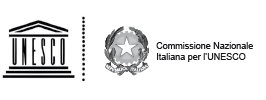Historical Background
Technological advancements and cultural and social transformations during the first years of Turkish Republic (1920s and 30s) had a significant impact on demographics and production activities. Starting from the 50s decline in rural population has caused rapid urbanization, with ateliers transforming into factories. Due to fast-changing social, economic and political developments encountered in the nineteenth and twentieth centuries, the terminology used in handicraft activity has been altered. Turkish culture’s materialistic products named as “handicraft” during the first years of Turkish Republic. After the 30s the term “handicraft” started qualifying a larger area and was turned into “traditional handicrafts”. In the 60s the concept of “handicraft” have transformed into “small industrial products”. With the importance attributed to tourism during the 70s, new terms such as “touristic souvenirs/handicrafts” entered the lexicon. As such, while the materialistic products of the Turkish culture still attain their cultural and historical significance at the present day, there seems to be an increased confusion surrounding the terminology used to describe these hand made products.
Ayşe ÖZBIL






